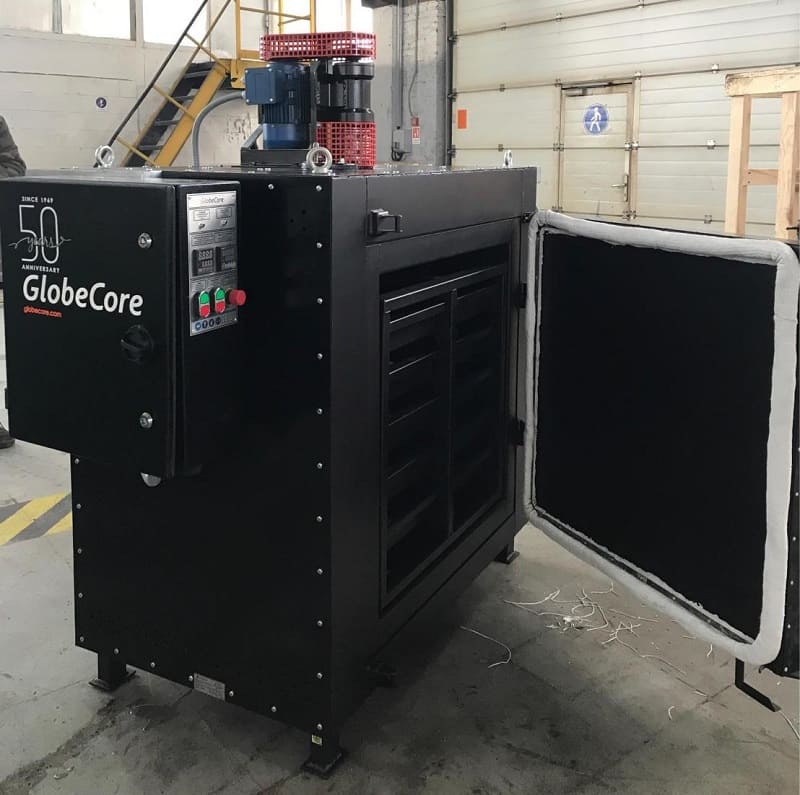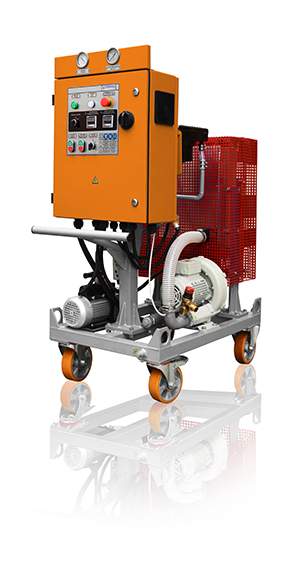In this article, we will talk about the problem of zeolite regeneration in oxygen concentrators and how to solve it. Oxygen concentrators are an important tool for extracting oxygen from the environment for treatment and support of people with lung-related diseases at medical facilities, hospitals, health resorts, or at home. They are a safer, less expensive, and more convenient alternative to cryogenic oxygen tanks or pressurized cylinders.
What an oxygen concentrator consists of?
A typical oxygen concentrator consists of an air compressor, a charcoal filter, cylinders filled with zeolite granules, a pressure equalizing tank, several valves, and a tube. In separation of oxygen from ambient air, the leading part belongs to porous zeolite sorbent with a fraction size of 0.2–0.5 mm. The oxygen concentrator compresses the air and passes it over the zeolite, forcing the zeolite to adsorb nitrogen from the air. Then it collects the remaining gas, which is mainly oxygen, and nitrogen is desorbed from the zeolite under reduced pressure for further removal.
The problem of zeolite regeneration in oxygen concentrator cylinders
Zeolite smoothly absorbs nitrogen, but its absorptivity is gradually exhausted, and the efficiency of generating concentrated oxygen decreases. In this case, zeolite should be changed for a new one which requires additional financial costs for purchase of new and disposal of spent zeolite. However, for the companies and organizations engaged in servicing of oxygen concentrators, there is an alternative, a more advantageous solution which is zeolite regeneration and reuse.
Zeolite regeneration system for oxygen concentrator
GlobeCore has developed a technology for finely dispersed zeolite regeneration in oxygen concentrators which is implemented in SSC drying cabinet.
This unit works as follows. The whole volume of zeolite is distributed across ten fire-pans with each placed in its individual cell of the operating chamber. The required temperature inside the chambers is ensured by means of a low-pressure compressor, and its uniformity throughout the volume — through blower operation. An operator just needs to select the required operation mode. When the set temperature is reached, the timer starts counting down the exposure time after which heating is disengaged. During heating, the zeolite pores expand and undergo cleaning which means that the absorptivity of the sorbent is reclaimed.
After zeolite is cooled, it can be used in oxygen concentrator cylinders. This technology can be also applied to zeolite regeneration with other purposes, including the regeneration of zeolites used for dehydration of industrial oils, drying of silica gels, drying and baking of motor windings, drying of small transformers and electrodes.
The use of GlobeСore zeolite regeneration technology makes it possible to reduce the costs associated with servicing of oxygen concentrators by saving money on the purchase of new and disposal of spent zeolite, to enhance the operational reliability of oxygen concentrators, and to mitigate environmental pollution.


 BRZ Zeolite Regeneration ...
BRZ Zeolite Regeneration ... BRPS Zeolite Regeneration ...
BRPS Zeolite Regeneration ... SSC-15 Zeolite Drying ...
SSC-15 Zeolite Drying ...